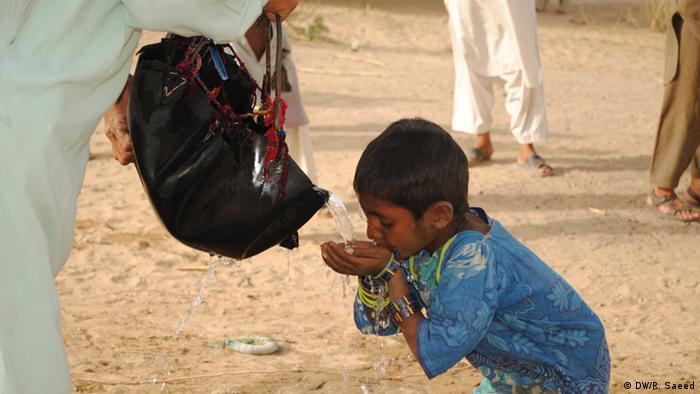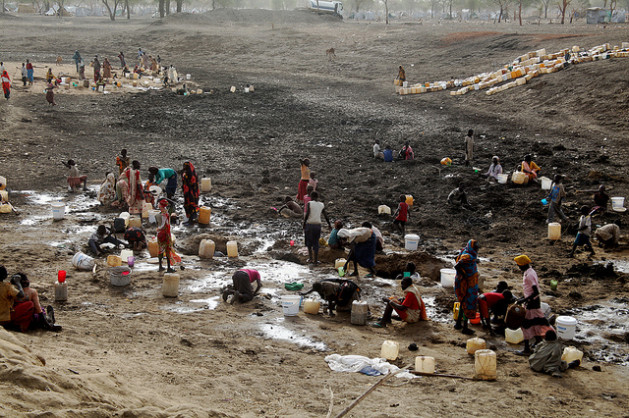Asia’s Water Problem is Worsening.About half of the world’s total population reside in the largest continent. More people only means more demand with water, among other needs. But it looks like Asia’s relationship with water will be much more complicated as we reach the year 2050.A study from the Massachusetts Institute of Technology entitled, “Projections of Water Stress Based on an Ensemble of Socioeconomic Growth and Climate Change Scenarios: A Case Study in Asia” suggests that in 35 years, Asia will suffer from serious water shortages with roots from economic and population growth on top of climate change. Using a detailed modelling to measure the full range of scenarios involving water availability and use in the future, the scientists conclude that there is a “high risk of severe water stress” across Asia.

The scientists find that the median amounts of projected growth and climate change by 2050 would lead to about 1 billion more people becoming “water-stressed” compared to today. They looked at a large number of simulations of future scenarios to arrive to this conclusion.The scientists used an existing model developed previously at MIT called the Integrated Global Systems Model (IGSM). It has the probabilistic projections of population growth, economic expansion, climate, and carbon emissions from human activity, which they linked with detailed models of water use in Asian countries like China, India, and many smaller nations. Three main scenarios were used as an approach to tease out the human and environmental factors. They were done in extensive series of repeated projections using varying conditions. In one scenario they call “Just Growth,” they held climate conditions constant and evaluated the effects of economic and population growth on the water supply. In another scenario called “Just Climate,” they held growth constant and measured the climate-change effects alone. The third scenario, which is “Climate and Growth,” the scientists used the rising economic activity, growing populations, and climate change as studies of impact.
Three main scenarios were used as an approach to tease out the human and environmental factors. They were done in extensive series of repeated projections using varying conditions. In one scenario they call “Just Growth,” they held climate conditions constant and evaluated the effects of economic and population growth on the water supply. In another scenario called “Just Climate,” they held growth constant and measured the climate-change effects alone. The third scenario, which is “Climate and Growth,” the scientists used the rising economic activity, growing populations, and climate change as studies of impact.

The distinct kind of modelling enabled the scientists to evaluate some of the particular factors that affect the different countries in Asia to varying extents. For example, in China, the industrial growth has the greatest impact as people get wealthier. Meanwhile in India, population growth brings upon the greatest effect. The factors vary by region.What the scientists also emphasized in their modelling is its complexity: it’s not merely adding the effects of economic growth and climate change, but also on the networked water supply into and out of the area. Part of the model is a network of water basins, which means involvement of upstream and downstream – both of which affect each other. One cited situation is when the amount of rainfall near upstream basins is lowered because of climate change while the population is growing, the basins farther away from the initial water shortage would be affected more acutely.

The team of scientists includes Adam Schlosser, a senior research scientist and deputy director at MIT’s Joint Program on the Science and Policy of Global Change; Charles Fant, lead author of the paper and a researcher at the Join Program; Xiang Gao and Kenneth Strzepek, who are also researchers at the Joint Program; and John Reilly, a co-director of the Joint Program who is a senior lecturer at the MIT Sloan School of Management.

Taking the Study Conclusions Further While the scientists from MIT have used a complicated tool to predict the roots of an impending water crisis in Asia, it got commendation it deserves from various bodies.The United Nations’ World Institute for Development Economics Research, through its agricultural economist Channing Arndt, said that the paper is “looking at a really important issue for the world” and thought that the basic finding of the study “makes sense.” Arndt added that the scope and evaluation approach of the paper, which is integrating climate change with economic and population growth, is “worthwhile.”MIT’s scientists is taking its study further by working on related projects, like one on the effects of mitigation on water shortages. They are extending on adaptation practices such as more efficient irrigation technologies which will help in alleviating the water problem in nations who are categorized to have high water stress. Their preliminary findings indicate strong cases for effective actions and measures to reduce risk. It doesn’t stop there though, as the team aims to still look for ways in fine-tuning their modelling, ultimately to estimate significant water shortages in the future.










